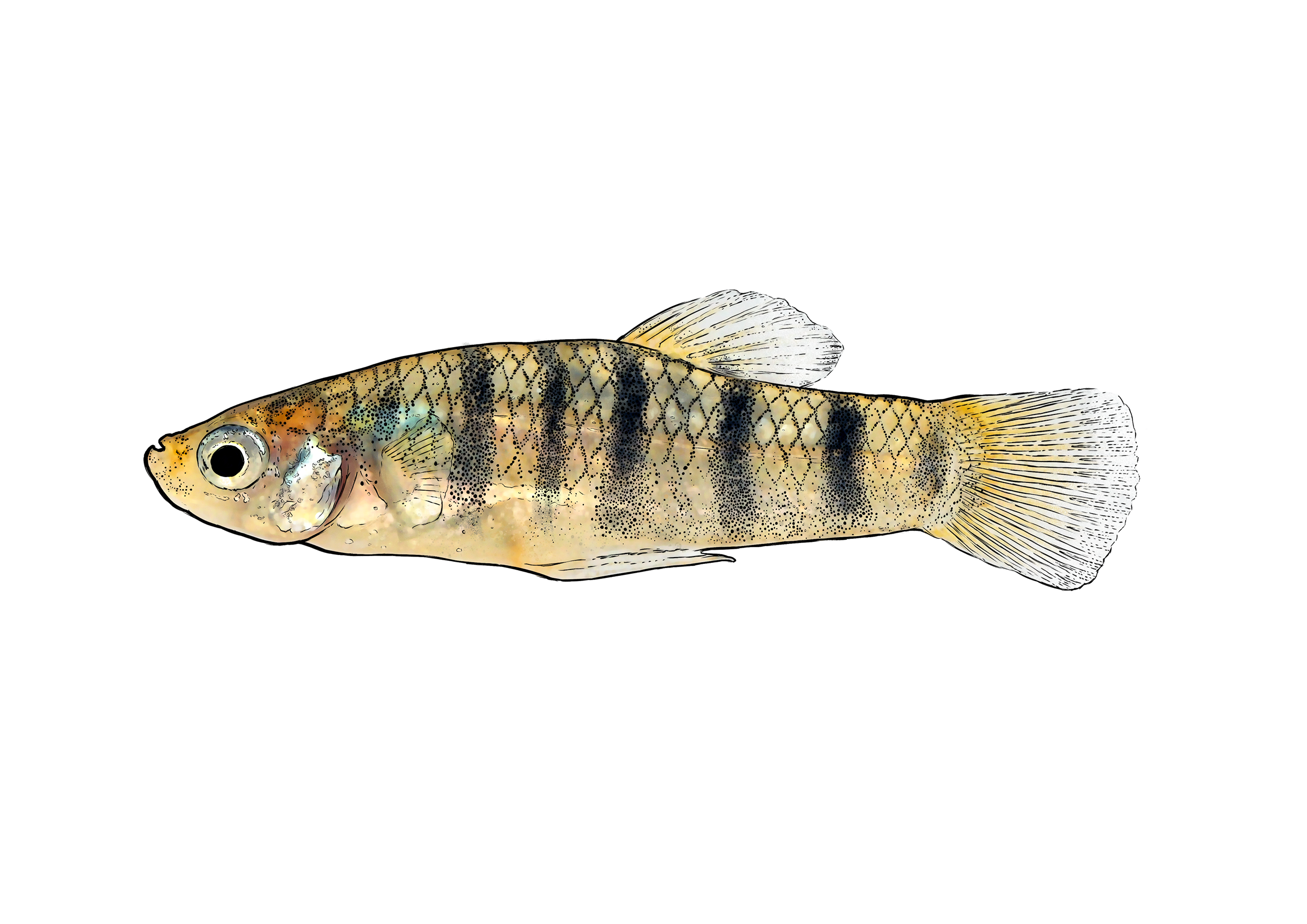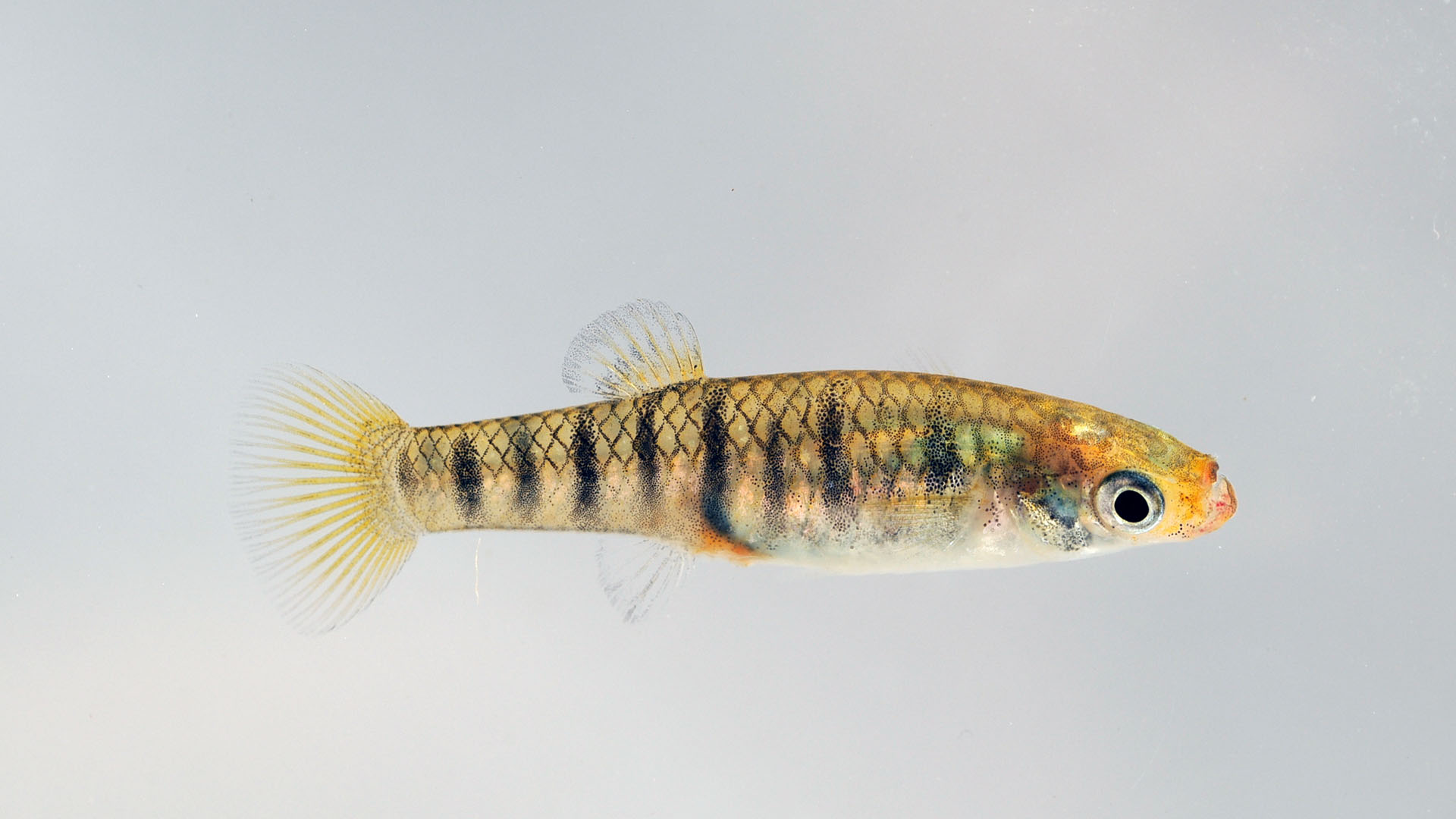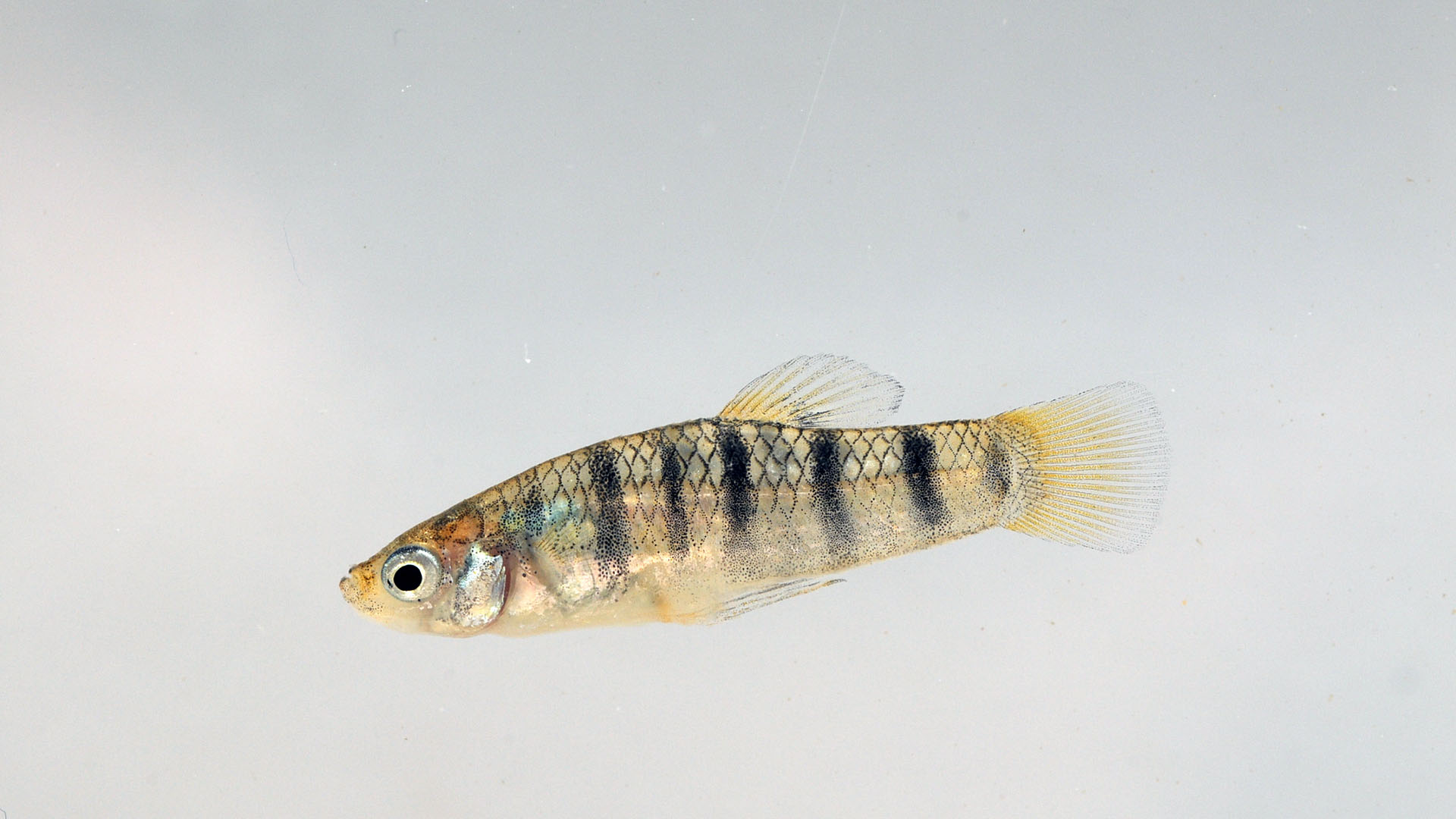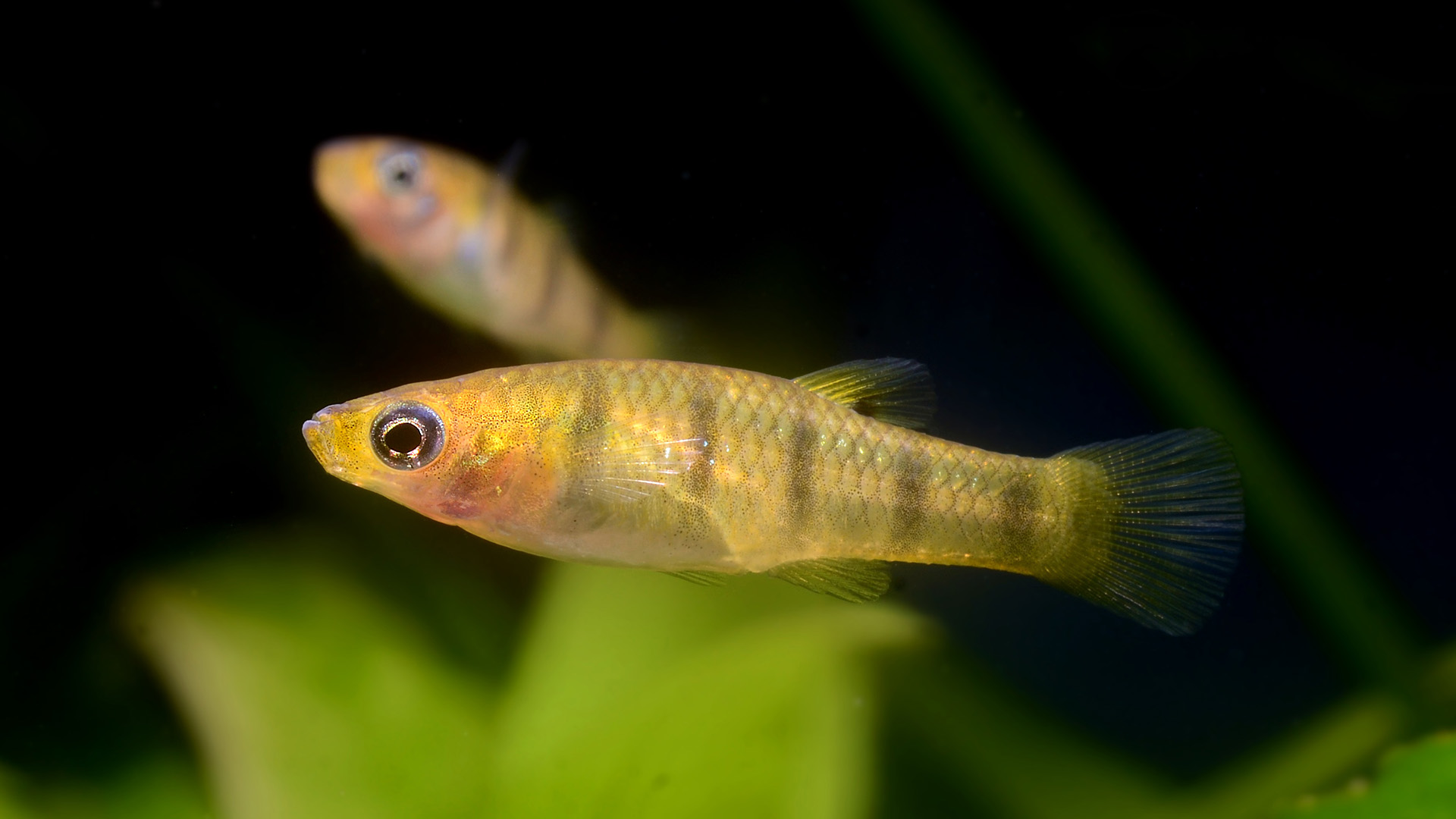Tiger Limia
Limia islai
Tiger Limia
Limia islai
CC goal
20 breeders
Status 11/2025
CC goal
2000 animals
Status 11/2025
CC goal
20 breeders
Status 11/2025
CC goal
2000 animals
Status 11/2025
Lake Miragoâne is the largest freshwater lake in the Caribbean. Depending on the water level, it covers an area of 9 to 24 square kilometers and is up to 45 meters deep. However, the home waters of the Tiger Limia, which are found only in Haiti on the island of Hispaniola , unfortunately do not resemble the dream of a Caribbean idyll. Deforestation in the surrounding area is causing sediment to enter the water and lowering the groundwater level. Haiti is one of the poorest countries in the world and has no sewage system in many regions, meaning that faeces, cleaning agents and other pollutants end up untreated in the lake. Pesticides, which are used specifically to catch fish for human consumption, also pollute the water. These are far from ideal conditions for the Tiger Limia, which is therefore threatened with extinction.
One of the poorest countries in the world
Evolutionary biology by textbook
The emergence of the species Limia islai and its viviparous relatives in Lake Miragoâne is a prime example of adaptive radiation – a special form of evolution. Lake Miragoâne is the only place in the world where livebearing toothcarps have undergone such adaptive radiation, similar to the cichlids of Lake Tanganyika or Lake Malawi, the Darwin’s finches of Galápagos or the lemurs of Madagascar. The occupation of different niches within a lake and the associated speciation offer the opportunity to draw a unique evolutionary-biological comparison with similar processes in cichlids, should we succeed in saving these species.
Poeciliidae family
Sneaky males
In contrast to the closely related Humpbacked Limia, whose males engage in comment fights to win the favor of the females, male Tiger Limia resort to a sneaky mating strategy, where they sneak up on the females and fertilize them as they swim past. They transfer the sperm to the female through internal fertilization via the gonopodium. This mating organ is formed by the transformation of the anal fin and has hooks at the end to enable it to attach to the female’s genital opening.
The possibilities of counteracting the extinction of the Tiger Limia and other inhabitants of the lake are currently close to zero.
© Rency Inson Michel, Wikimedia Commons
Livebearing fish
As their family name suggests, poeciliids do not lay eggs, as the offspring develop into young fish capable of swimming while still in the womb. Unlike in mammals, however, the embryo is still nourished by the egg yolk and not by the mother organism. After hatching the relatively well-developed offspring seek out hiding places between aquatic plants.
At the time of hatching, the juveniles of the Tiger Limia are already relatively well developed. © Sebastian Wolf
An aquarium fish to the core
The Tiger Limia has been present in the aquarium hobby in Europe and the USA since 1998, but it was only scientifically described as Limia islai in 2020. The discovery of the species in the aquarium already shows the importance of aquaristics and animal husbandry in general for species conservation. The first CC animals of the Tiger Limia also made it into the program through cooperation with the VDA working group on livebearing aquarium fish, which called on its members for support. The VDA is the Association of German Aquarium and Terrarium Clubs. Unfortunately, without coordinated conservation breeding efforts, endangered species have often disappeared from aquariums in the past. With the introduction of the species into Citizen Conservation, a reserve population for the Tiger Limia is to be established through coordinated conservation breeding. This will prevent this species from disappearing unnoticed from aquariums.
One Plan Approach for the Tiger Limia
Due to the unstable situation in Haiti, the possibilities of counteracting the extinction of the Tiger Limia and other inhabitants of the lake are currently close to zero. Measures to preserve the animals on site, such as a project funded by the Stiftung Artenschutz (foundation for the protection of species), are therefore difficult to implement successfully in the long term. Working on the lake is sometimes simply too dangerous for conservationists. This makes coordinated ex-situ conservation breeding, such as that of Citizen Conservation, all the more important.
For breeders
Basic information on biology and breeding
A fish that is easy to keep and also recommended for beginners. A freshwater aquarium from 54 liters (approx. 60 x 30 x 30 cm) with an air-operated sponge filter and a tuft of Java moss is suitable for keeping a group of 10-20 animals. Tiger Limias can be kept well at temperatures between 22 and 30 °C.










